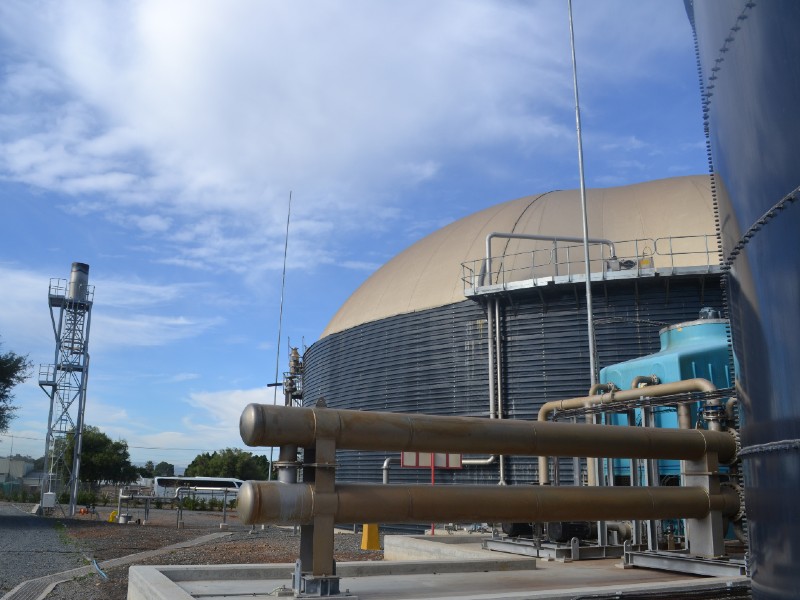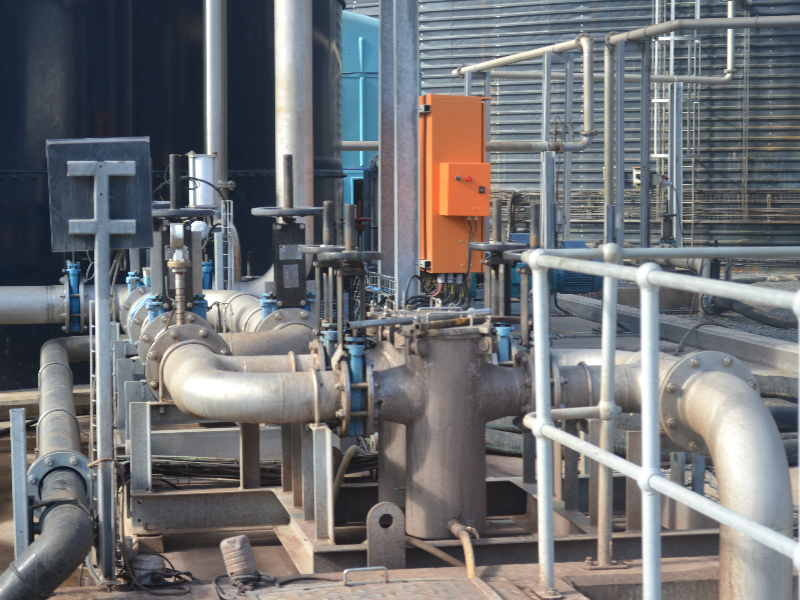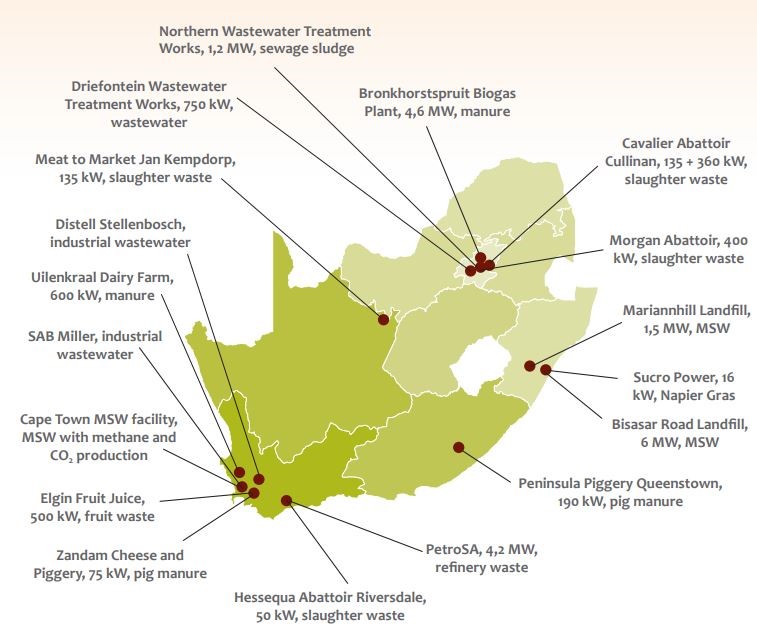
The biodigester at Bren-o-kem's Vinaqua wastewater treatment plant in Worcester. Image Source: ESI Africa.
Amidst the picturesque winelands of Worcester in the Western Cape, lies Distell, a renowned beverage company and home to the Vinaqua wastewater treatment plant that includes anaerobic digestion, aerobic digestion and ultimately reverse osmosis to create a biogas facility.
It was to this plant that a group of Enlit Africa 2023 delegates made their way, as part of a site visit designed to highlight innovative generation technologies leaving green footprints on South Africa’s energy landscape.
The facility was built for Distell and their partner Brenn-o-kem to recycle the wastewater produced from the wine distilleries and to turn their organic waste into a useful resource.
The biogas facility came about in April 2021 and began operating in September 2021.
It was built together with Canadian technology provider Anaergia in order to help Distell solve an urgent problem created by their wine grape effluent being pumped into surrounding municipal waste treatment facilities.
According to Anaergia, the Vinaqua plant includes anaerobic and aerobic digestion, as well as reverse osmosis. The plant processes the wastewater produced by Brenn-O-Kem and Distell into valuable by-products such as methane (energy) and clean water for internal recycling.
The plant therefore processes the wastewater in an environmentally friendly way, turning both Brenn-O-Kem and Distell into nett producers of water.
How the plant works
Anaergia explained that the wastewater, which contains high concentrations of suspended solids, is processed in their high-solids Omnivore system, which produces biogas and reduces solids that would have required disposal.
The 725 cubic meters per hour of biogas created from the digested waste fuels a generator to produce electricity onsite, creating a reliable power supply for the facility, especially important as the country experiences increasing levels of loadshedding.
The digestated cake can be used as fertiliser, while the remaining filtrate is treated using a proprietary membrane bioreactor system made by Fibracast, an Anaergia affiliate company.
Daily inputs include 650 m3 (cubic meters)/day of grape- and marula-based distillery wastewater, as well as 375 m3/day of wine lees and pomace waste. Plant outputs include 750 m3/hr of biogas, 66 tonnes/day of fertiliser and 1,000 m3/day of clean water.
Key technologies and solutions provided by Anaergia for the project include PSM mixers, recuperative thickening, dewatering and the fibracast membrane bioreactor.
Ultimately, the project not only results in the lowering of greenhouse gas emissions but also boosts Distell’s circular economy activities by delivering potable water and fertiliser to be used in surrounding farmlands.

The pipe system bringing the wastewater into the Vinaqua plant. Image Source: ESI Africa
Biogas in South Africa
According to GreenAgri, the nascent biogas sector in South Africa is home to 28 biogas projects operating in the commercial and industrial space, with the highest concentration in the Western Cape.
Out of 28 feedstock sample projects, five are related to energy crops, eight are livestock-related projects, four are based on abattoir waste, four are related to water and/or wastewater and the remaining seven projects use food and general waste as feedstock (GreenCape, 2022).

Map of selected biogas digesters installed in South Africa. Image credit: Biogas Guidebook
Overall, while the number of biogas projects currently operational in South Africa is relatively low, the diverse feedstock options and growing interest in renewable energy suggest that the country’s biogas market has significant potential for expansion in the coming years.
According to the chairperson of the Southern African Biogas Industry Association (SABIA) Jason Gifford, the Southern African biogas industry’s direct local and foreign investment value was between R52 billion and R250 billion in the beginning of 2022.
In order to spur market development, however, key barriers to market entry must be overcome, including high capital costs, lack of government incentives and subsidies, as well as limited access to feedstock.
Global biogas market
According to the International Energy Agency, global direct consumption of biogas was around 35 Mtoe in 2018.
Currently, over 60% of biogas production capacity lies in Europe and North America, with Europe being the leading biogas-producing region.
Europe has around 20 000 biogas plants, most of which are built for on-site electricity generation and co‑generation.
The IEA projects that production of biogas for direct consumption will reach around 75 Mtoe in 2040. Most of this growth will come from centralised plants that are fed by agricultural and municipal solid waste sources in order to meet local power and heating demand.